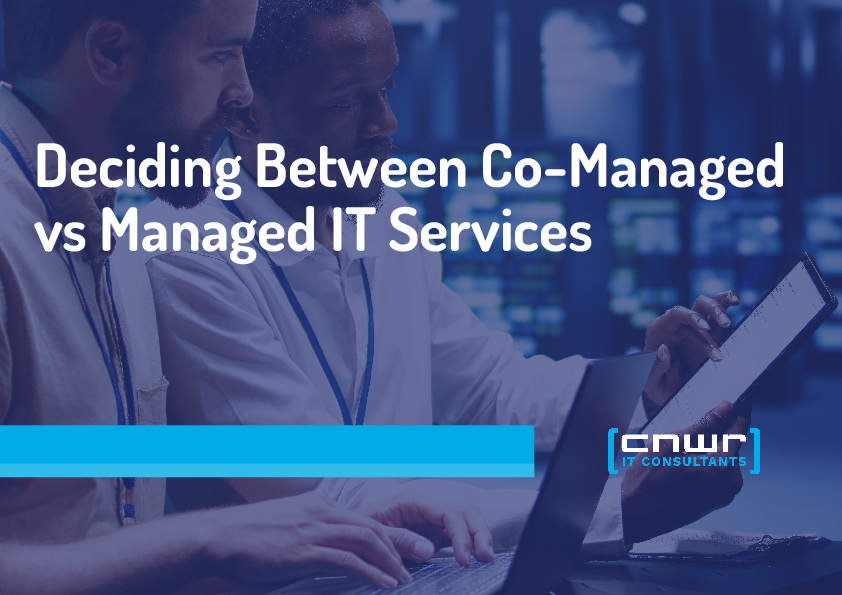Managing and maintaining your business’ IT systems can be complex and time-consuming, often requiring specialized knowledge to ensure your infrastructure runs smoothly. Instead of placing the burden of your IT system squarely on your internal teams’ shoulders, enlisting an IT service provider may be a wise move to help alleviate some of the responsibilities on your employees.
However, knowing the right IT support services to hire is imperative to generating the most effective solutions tailored to your company’s weaknesses.
That’s why it’s critical to understand the difference between managed and co-managed IT services. Managed IT services and co-managed IT services are the two core approaches to IT support and management that businesses can choose from to match their specific IT needs and goals.
Understanding Managed IT Services
A company that chooses the managed IT approach outsources all IT responsibilities to a managed service provider (MSP). With an MSP managing their IT services, businesses can entirely rely on the expertise and support of the MSP to operate and maintain their IT systems and infrastructure. This includes network management, software patching, security software, data backups, and remote access support. With these MSPs taking a proactive approach to your IT system, businesses can minimize downtime, improve operational efficiency, and ensure the security and reliability of your IT infrastructure.
Since the MSP takes on all of a company’s IT services, businesses do not have to have their IT team on staff. They can put more energy and resources into their business operations without their employees struggling to support their IT infrastructure.
Exploring Co-Managed IT Services
Co-managed IT services offer a hybrid approach to IT support and management, combining the expertise of an internal IT team with the additional resources and support of an MSP. This collaborative approach allows businesses to leverage the knowledge and experience of their internal team while benefiting from the specialized expertise of the MSP.
The internal IT team focuses on strategic projects, such as implementing new systems, evaluating emerging technologies, and aligning IT with business objectives.
Instead of taking on all the IT services, MSPs only provide support and expertise in areas where the internal IT team may need more resources or specialized knowledge, including cybersecurity, network management, and help desk support.
Using the combination of an internal IT team and an MSP allows much more flexibility in building your IT department. Companies can design their IT team precisely to their specifications and simply use MSPs to fill in any gaps in their knowledge rather than entirely rely on a third party.
Decision-Making Factors for Businesses
When deciding between managed IT services and co-managed IT services, businesses should consider several factors to make an informed decision. These factors include:
- Business Needs: Assess the business's specific IT requirements and goals. Consider the level of IT support needed, the complexity of the IT infrastructure, and the desired level of control. If your business lacks an IT department, hiring an MSP to handle it may be worthwhile.
- Internal IT Staff: Evaluate the expertise and resources of the internal IT team and determine if additional support or expertise is required to meet the business's IT needs.
- IT Support: Consider the level of IT support required and the desired level of involvement in IT management. Decide if a fully outsourced IT solution or a collaborative approach with an MSP is the best fit.
By considering these decision-making factors, businesses can determine the suitable service model that aligns with their IT requirements, resources, and long-term goals.
Conclusion
Understanding the differences between co-managed and managed IT services is crucial for businesses looking to optimize their IT support. Choosing the suitable IT service model that aligns with your business goals can enhance operational efficiency and drive growth effectively.
If you need additional guidance, our IT experts at CNWR are happy to help you evaluate your business and find IT solutions to maximize its capabilities.
To learn more, contact us today and visit our Managed Services and Co-Managed Services pages.





